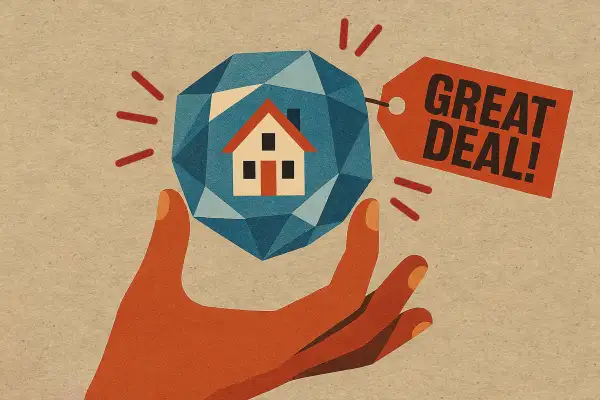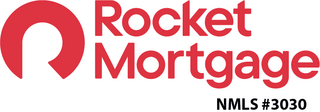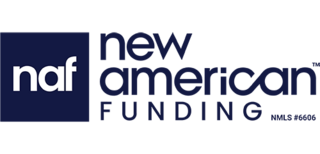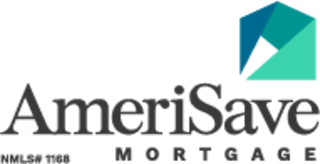How I Bought a Home With Zero Down Payment and Scored a 4.75% Rate

After moving 26 times in 31 years, I finally found a place to put down roots. In December, I bought my own home in idyllic St. Petersburg, Florida, with no down payment — and got a 4.75% fixed-rate mortgage to boot.
The deal gets even better: I negotiated $50,000 off the listing price, and even though I didn’t make a down payment, I don’t have to pay for private mortgage insurance, either.
You're probably thinking that sounds too good to be true in today’s housing market. My partner certainly said that at first. But the homebuying program through the national nonprofit Neighborhood Assistance Corporation of America, or NACA, that I used to purchase my home is no joke.
The day I closed, mortgage rates were over 6.9%. It was a cathartic moment for several reasons. For one, buying my first home marked the end of a nomadic era, largely due to poverty and family circumstances (notwithstanding my stint in Seoul, South Korea. That was definitely out of choice.)
And after months of delays, two hurricanes that devastated the Tampa Bay region and other administrative issues that kept pushing my closing date back, catharsis also came from being able to look my partner in the eye and finally say: “See? I told you it wasn’t a scam.”
The most generous homebuying program you’ve never heard of
If you had asked me this time last year whether it’s possible to buy a home without a down payment, I probably (incorrectly) would have told you no, not unless you’re an eligible veteran or qualify for a USDA loan for a home in certain rural areas.
Even with government-insured FHA loans for first-time buyers, you still need to put down at least 3.5%. In general, if you want to avoid costly mortgage insurance tacked onto your monthly payments, you need to put down at least 20%. C’mon. This is Personal Finance 101 stuff.
What I did not learn in Personal Finance 101, nor during six years of covering personal finance as a journalist, was that you do not need a down payment to buy a home through NACA. Sure, you can put money down if you want, but it’s not a requirement. Indeed, I had no idea NACA even existed.
Born out of a 1988 hotel workers’ union campaign, the organization’s roots trace back to a legislative push that got George H. W. Bush to amend the Taft-Hartley Act, opening the door for unions to help members afford housing. That effort grew into the nationwide housing assistance nonprofit NACA is today.
Overwhelmingly, NACA's discounted mortgages are provided by Bank of America, which has partnered with NACA since 1996. Hugh McColl, former CEO of the bank (then called NationsBank), said "if NACA is as good as it sounds, we will be your biggest and best partner." To this day, that commitment rings true. In 2021, Bank of America expanded the partnership, with the aim to provide $15 billion in mortgages by 2027. Over the years, other banks have funded NACA mortgages, including $4 billion from Citi, but Bank of America remains the biggest partner by far.
How had I not heard of this before? No one even close to my age that I asked had heard of NACA, either. You’d think a program like this — especially during a housing affordability crisis supercharged by the pandemic — would be shouted from the rooftops.
It wasn't until I was searching for down payment assistance programs that I randomly stumbled upon NACA. I’m so glad I did because what I found was so much more than that, and I wouldn’t have been able to buy the home I did without the organization.
So here I am, shouting about NACA from the rooftops.
How NACA’s homebuying program works
Here’s the NACA elevator pitch: If you’re buying a modest home (in most cases, with a maximum price around $548,000 but as much as $822,000 in certain high-cost areas) you may qualify for NACA’s nationwide homebuying program. And, if your earnings are less than the area's median household income, you can get an additional mortgage rate discount.
The perks are hard to overstate. No down payment. No private mortgage insurance. Heavily discounted or waived closing fees. No credit score required. And you’ll get a below-market mortgage rate, often a full percentage point below regular rates — that you can further buy down, if you want.
For every 1.5% of the purchase price that you voluntarily buy down, you can lower your mortgage rate by a quarter point. For instance, if the home price is $500,000, you can buy down the rate in increments of 0.25 percentage points per $7,500.
Since I was planning on putting down a small down payment before I came across NACA, I instead channeled about $10,000 into buying down my rate. The buy-down benefit, paired with the perk of not having mortgage insurance, drastically improved the quality of home I could reasonably afford.
I went from browsing $250,000, rough fixer-uppers in flood zones to the home I bought: a three-bedroom, one bath, $325,000 ‘70s block home in a non-flood or evacuation area (a huge perk in hurricane-prone Florida). My monthly payment, including homeowners insurance and taxes, is about $2,350.
Qualifications and caveats
Homebuying is already a convoluted process. Add to that a complicated funding program that has a unique qualification and approval system, and it quickly becomes a part-time job for about three to six months, depending on your financial situation.
Before I get into the fine print and tedious aspects of the program, let me say that any amount of paperwork is worth the deal I got on my home. That said, you should get comfortable with the idea of paperwork early. You will have loads of it.
Basic requirements
Here’s a high-level run down for the requirements of buying a home through NACA.
- NACA’s homebuying program isn’t for first-time homebuyers per se, but you (or any other adult that you're buying with) can’t own any other real estate at the time of purchase. Similarly, you must not have owned a home within the last three years.
- You can’t be a real estate investor.
- The property must be your primary residence after purchase. NACA puts a $25,000 lien on the home to ensure this. The lien is reduced by $5,000 per year, so after five years that requirement is essentially lifted. For emergency situations that require you to move sooner, NACA can waive the requirement on a case-by-case basis.
- You need to be present at the home throughout the purchase process, including attending the home inspection and closing in-person at a local NACA office.
- You must agree to and complete NACA’s homebuying program, including workshops, counseling sessions and financial monitoring.
- You need to join NACA as a member and get involved in certain community events, which could range from testimonials, in-person events or referring a friend. (Disclosure: to provide a fair review of the program as a journalist, this article does not count toward this requirement, and NACA was not involved whatsoever in the editorial process.)
- Unlike most housing assistance programs, there is no explicit residency or citizenry requirement.
What to expect
Your first step with NACA is a four-hour homebuying workshop (thankfully, there’s a virtual option). In it, you’ll learn the ins and outs of the program.
To move forward, you’ll need to officially join NACA as a dues-paying member ($36 a year), get your NACA ID, and start uploading your financial documents to the homebuyer portal — the system you’ll use to schedule appointments and track your progress.
A major perk: NACA works with people who have low or no credit, often providing one-on-one counseling that may include a trial savings period to show you can handle a mortgage payment.
When you're ready to buy, you’ll need a NACA-trained real estate agent. You can bring your own agent — if they agree to complete NACA’s onboarding. Be forewarned. It’s not just agents that need to get approved: Appraisers, inspectors, and contractors also have to go through NACA’s systems. If the organization is well-established in your area, they’ll have a roster of recommended businesses that are already onboarded. If not, you’ll need to do the legwork to get new businesses registered with NACA.
My biggest gripe of the program is the patchwork of local and national departments. Communication breakdowns were common, and at one point I was juggling my mortgage counselor, multiple home-repair agents, two different inspectors, a contractor, and a real estate agent trying to register with NACA — all while managing a seller that was a faceless corporation. Every question had to pinball through five or six people before I got an answer.
Your process might be smoother, but expect to coordinate with several people at any given time.
Despite these critiques, I recognize that there truly is no other organization out there doing the work NACA does. Other home-buying assistance programs available to me would only provide between $10,000 and $15,000 for the down payment. And there were strings attached to that money — it wasn’t a grant but essentially an interest-free second mortgage on the home, so if I were to ever sell or refinance (inevitable if I'd had a 7% rate), that money would come due.
Even with down-payment assistance, draining my savings account and taking $10,000 from my Roth IRA, I still would not have been able to make a 20% down payment on any reasonably comfortable home in St. Pete, meaning I would’ve had to pay private mortgage insurance, too.
NACA wiped away all of those barriers for me. It allowed me to afford a cute home with a back yard for my pup Bambi in a friendly, working-class neighborhood that’s, crucially, outside of a flood zone.
After last year’s record-breaking storms, I can’t say that I’m looking forward to my first hurricane season as a homeowner, but I’m extremely grateful and lucky to have found a place above sea level that'll also keep my budget above water.
More from Money:
Spring Housing Outlook: Buyers and Sellers Will Have to Navigate a Shifting Market
Home Insurance Price Hikes Are Far Outpacing Inflation. Here's Where Premiums Cost the Most






